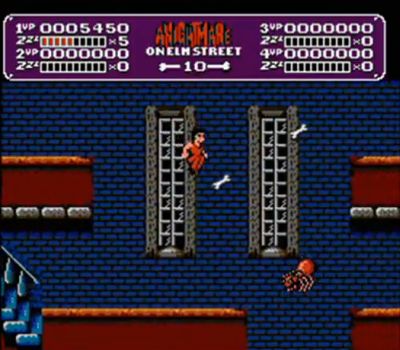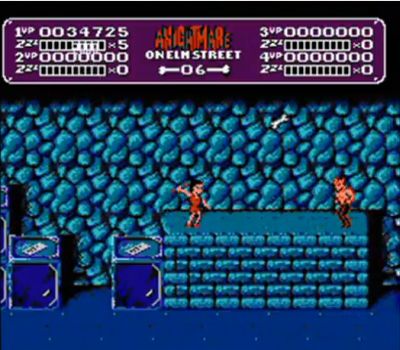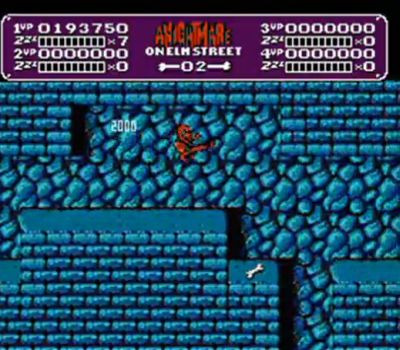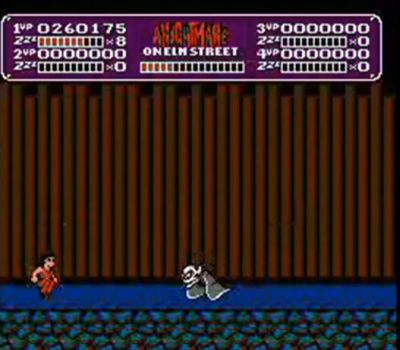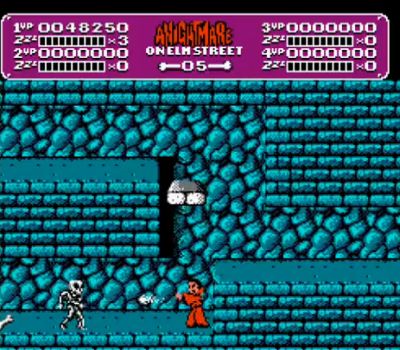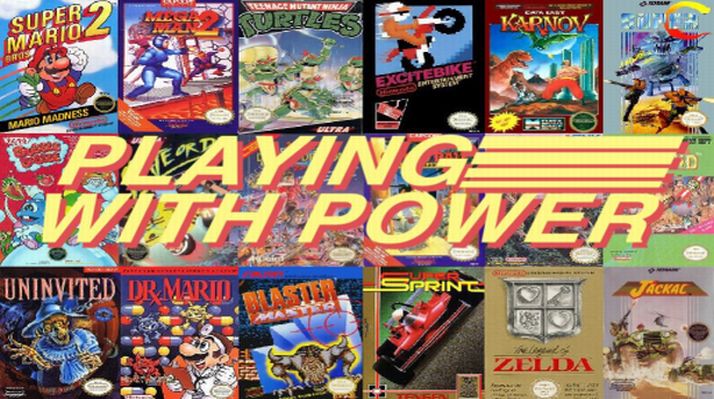 Welcome to another edition of Playing With Power. The review article that looks at all things Nintendo Entertainment System. And happy Halloween. That magically monstrous time of year is at us again, and that means it’s once again time to talk about a horror themed game. Last year, I talked about Monster Party, and had some positive things to say about that game, especially its utter insanity. So this year, you’d think I’d be talking about another beloved cult classic.
Welcome to another edition of Playing With Power. The review article that looks at all things Nintendo Entertainment System. And happy Halloween. That magically monstrous time of year is at us again, and that means it’s once again time to talk about a horror themed game. Last year, I talked about Monster Party, and had some positive things to say about that game, especially its utter insanity. So this year, you’d think I’d be talking about another beloved cult classic.
But no, this year, it’s something even scarier… An LJN game!!
Specifically one of their games based on a horror license. Yeah, someone at LJN thought that making games about R-Rated horror flicks on a console where the target demo was chidren was a brilliant idea. But did it lead to decent titles? Or some scay crap? Let’s find out as we experience A Nightmare on Elm Street.
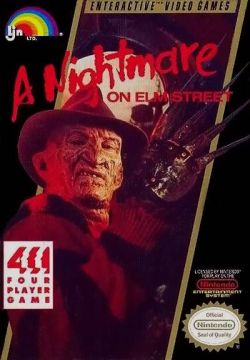 YEAR OF RELEASE: 1990
YEAR OF RELEASE: 1990
PUBLISHER: LJN
GENRE: Action Platformer
A Nightmare on Elm Street was a 1984 horror film directed by Wes Craven. It told the story of a girl named Nancy Thompson, who begins to see her friends and loved ones dying in mysterious ways. She soon learns that the one responsible is a man named Freddy Krueger, a former child murderer, who after being burned to death by the angry families of Springwood, managed to gain the power to invade the minds of his victims, and kill them in their dreams.
The movie proved to be a massive hit, and from there, the franchise was born, and would see several sequels throughout the 80’s. Freddy also became one of the most iconic horror villains of all time. Although as the franchise went along he became less of a serious evil, and more of a comedic jokester. Often killing his victims in more outlandish and goofy ways. Hell, he once killed a teenager by putting him in a Nintendo game and killing him with the help of a power glove. Yes, even Freddy Krueger, the bastard son of a 100 maniacs, played with power.
And that wouldn’t be the only time video games and Freddy would come together, obviously. As LJN who had picked up the licenses to horror franchises Friday the 13th, and a Nightmare on Elm Street, would make a Nightmare on Elm Street game. Rare would develop the title, which means it would at least be better than most of the games LJN were releasing at that time (Back to the Future for example). The game would be released in October of 1990, and has been considered as one of the more infamously bad LJN titles. But does it deserve that hatred? Let’s go deeper into this nightmare.
COVER STORY
An okay cover at best, though I don’t particularly care for the pic of Freddy they used. It’s not as scary as a game starring one of the true horror icons should be in my opinion. But it still works as an eyecatcher for any fan of the franchise, who will instantly want to buy the game with his mug on it.
STORY
It looks like once again Elm Street is being victimized with mysterious deaths. As with every waking day, another teen dies, and no one knows for sure. However, it’s once again the work of the notorious dream killer himself, Freddy Krueger. The only way to stop Freddy is to find his bones, scattered all over Elm Street, and burn the collection, to stop the sinister sandman once and for all.
GAMEPLAY
A Nightmare on Elm Street is a 1-4 player action platformer. You control an unnamed teen hero as he must go through the houses and locales of Elm Street to find the bones of Freddy Krueger. You move your protagonist with the D-Pad (Up can go into buildings, and down will duck), you can jump with the A Button, and attack with the B button. Start button will pause the game while select will allow you to pick from the several dream warriors in the game.
The game bases itself more on the plot of the movie Nightmare on Elm Street Part 3: The Dream Warriors, in which Nancy must help several institutionalized kids learn to control their dreams to fight off Freddy, while Nancy’s dad finds the remains of Freddy. And that’s basically what you do in this game. Find bones, and get the help of dream warriors.
However, the bones are scattered all over each area you go into. You have to find every bone before advancing further into the level, or facing one of Freddy’s several different forms. Bones are scattered all over the place. On the ground, on stairs, in high areas, or tricky to grab areas. You do this, all while avoiding stock enemies like snakes, rats, spiders, and bats. Oh, you’ll learn to hate these bats.
But if that wasn’t bad enough, you have a meter on top of your screen. This is your awake meter. It starts at red and slowly chips away. If it runs out, you will enter the dream world. It’s the same as the regular awake world, only now enemies are harder, and you can use dream warriors.
Throughout each level, you’ll find grey tokens, each with a different logo on it (a sprinter, a yin-yang, and a wizard’s hat). Once collected, you can use these powers. The sprinter token turns you into an athletic girl with javelin projectives (the best range in the game). Next is the wizard, who is about the same as the athlete, only he shoots magic instead. Finally, there’s the ninja, honestly the best character in the game. His shuriken shots are short range, but what really makes him worth using is his jump kick, which he executes automatically when jumping. This works great on the bosses.
The downside however is that you can only use these abilities in the dream world. In the regular world, you use a bland main character with a rather weak punch. Now you think you could just stay in the dream world and deal with that, but the game makes sure you don’t want to do that.
If you stay too long in the dream world, you’ll hear the familiar “One, two, Freddy’s coming for you” tune. And randomly, the screen will flash FREDDY’S COMING
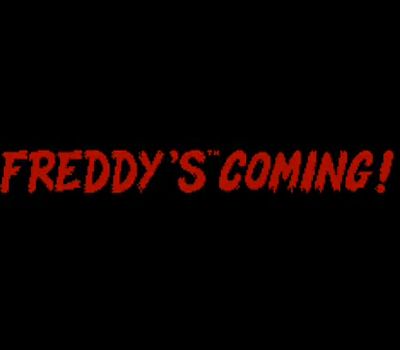 Oh wait, I mean FREDDY’S(tm) COMING! The only thing scarier than Freddy Krueger is a lawyer suing you for infringement.
Oh wait, I mean FREDDY’S(tm) COMING! The only thing scarier than Freddy Krueger is a lawyer suing you for infringement.
When this occurs, the game will put you in a fight with the main monster himself. To ensure you don’t enter the dream world, there are coffee cups scattered throughout each stage. If you do end up in the dream world, those coffee cups will be replaced by stereo sets.
The game is broken into seven stages, each found on the main hub area of the game. These include three houses (which randomize in their starting point with each game), the junk yard, the cemetery, Freddy’s house (the one with the boarded windows), and finally Elm Street High.
Each stage ends with a boss battle. These are Freddy in different forms. These include a glove tethered to balls, Freddy’s head tethered to balls, Freddy as a bat, Freddy as a ghost, and even a fight with Freddy’s glove and head. They each can be tricky, but usually have a simple pattern to them that makes them easier to face. Once you beat a boss, you get a key to the next level, which also gives you an extra life.
Speaking of lives, you get five lives to start, as well as three continues. So at least the game is generous. But don’t expect to keep them for long. The enemies in this game can be extremely annoying, as they can be placed in cheap areas, can sometimes be tricky to hit (especially with your regular punch), and respawn extremely fast. Not to mention your jump is a bit wonky, you can phase through platforms if you aren’t perfectly placed after jumping, and you also have that infamous “Castlevania Knock Back” which can send you careening right into the nearest pit.
So, by that logic, the game is rather hard and annoying. Not to mention, you can easily miss a bone if you aren’t paying attention. The bone collecting is annoying, the enemies are annoying, and overall, while not as broken as a game like Friday the 13th, there are things in this game that straight up break what is an otherwise decent at best experience. A shame.
The game has a four player ability. One of the very few games actually to use the NES four score. This allows four players on screen at once. The problem though is now the screen is far more cluttered. And honestly, who would goad their three friends to play this game with them?
GRAPHICS
The graphics are okay at best. Sprites all look good, backgrounds are spooky and have enough detail to them. The downside to the game is a lot of greens, blues, and muddy reds in the general palette. That aside though, it’s far from the worst looking LJN game, that’s for certain.
SOUND
Now here’s where the game excels the best. The game has an outstanding soundtrack, from the good old days of Rare. Level tunes are both creepy and energetic. They make a solid 8-bit rendition of the Freddy’s coming for you song, and there’s not a boring song in the game. I’d definitely say this one is overlooked. But considering the game the songs are for, that’s more than understandable.
OVERALL THOUGHTS
A Nightmare on Elm Street has a lot of problems. Despite okay graphics, decent at best controls, and some great music, the general gameplay is pretty bad. The goal of the game isn’t fun, bad enemy placement and respawn problems make for frustration, and the fact that you can only use the best ablities in the dream world also hurts this game.
A lot of people commonly compare this game with Castlevania II: Simon’s Quest, and it’s not hard to see why. Both have the general plot of finding the remains of their enemy, and burning them. Both use long and annoying transitions, which make enemies tougher. Both suffer from annoying challenge. But I think in most of those aspects, A Nightmare on Elm Street is still better.
Despite its massive problems, there is still a decent Rare platformer underneath it. It’s just a shame it was put in a throwtogether licensed game, that other than plot, has barely anything to do with the franchise it’s mooching off of. Classic LJN all the way. So, while I didn’t fully hate it, I still can’t recommend this one. It’s not the worst LJN game, but still not too good either. I’d say skip this, and dream of something happier.
RATING: Thumbs Down
Happy Halloween everybody.

